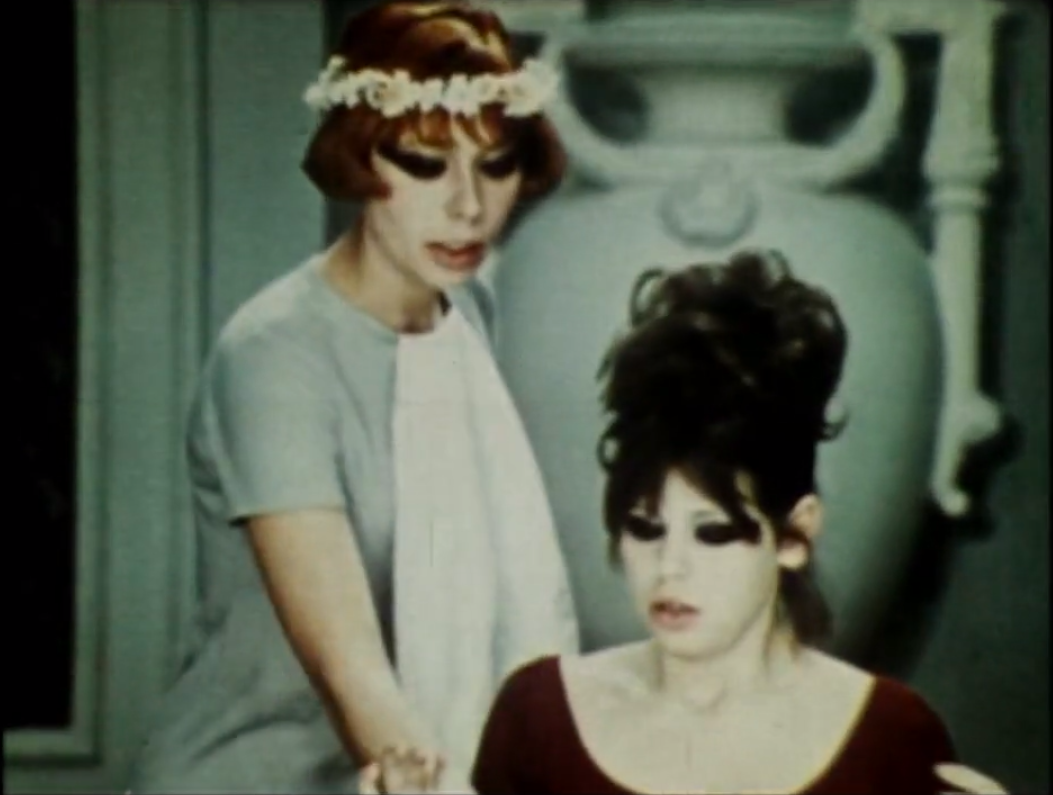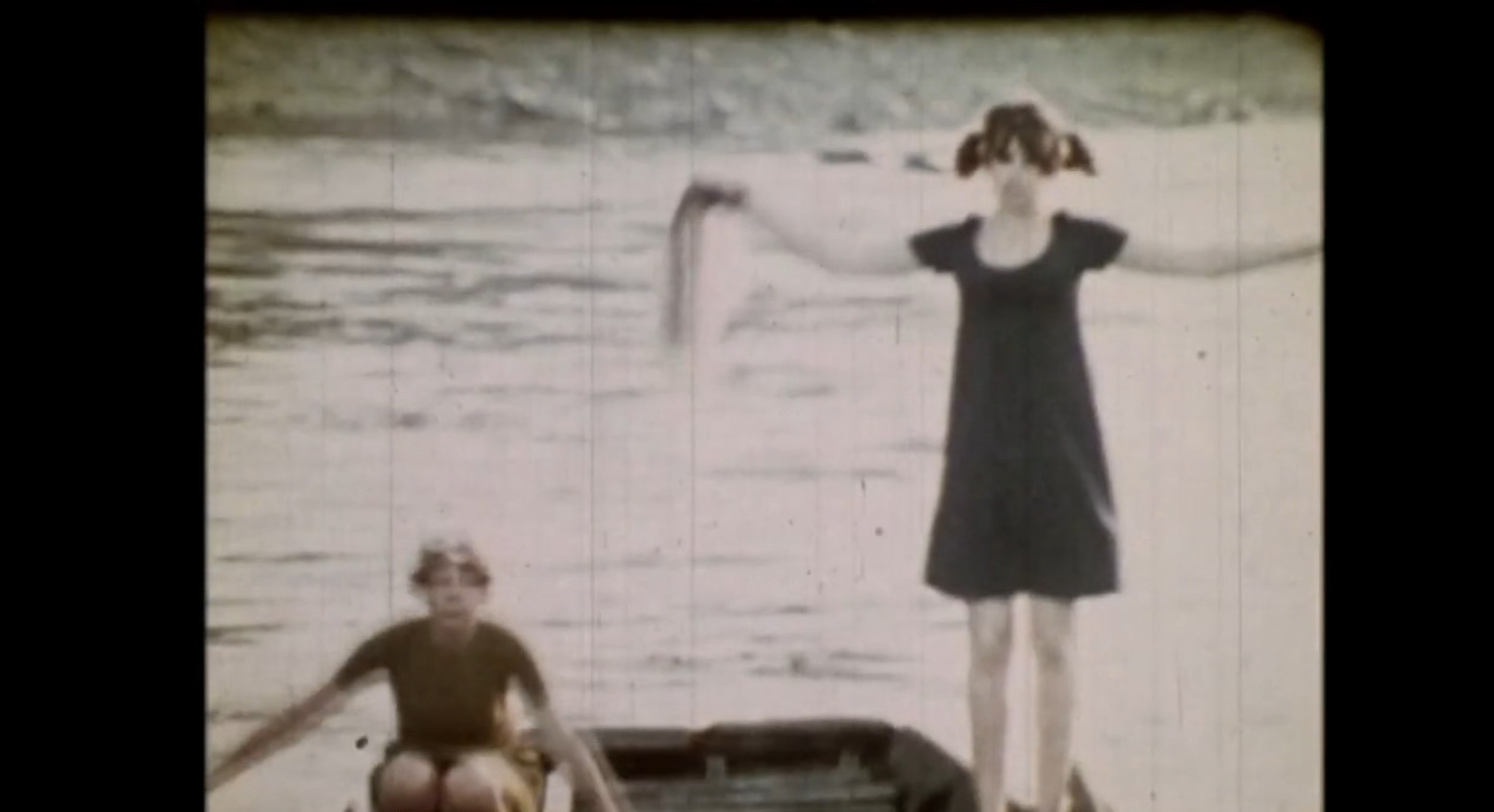While filming for Wendy and Joyce began in 1967, Michener’s sudden death in 1969 clearly foreclosed any further possibility of direct collaboration between her and Wieland. Yet Wieland returned briefly to the project when she was re-editing and completing several other unfinished films with the assistance of her niece, filmmaker Su Rynard, and financial support from an Ontario Arts Council grant in the mid-1980s. A and B in Ontario, Birds at Sunrise (1972–1986), and Peggy’s Blue Skylight (1964) were completed during this period. And although Wieland’s notes had included it with these other films that were slated to be completed, Wendy and Joyce remained unfinished. Viewing A and B in Ontario wherein Hollis Frampton and Wieland play hide-and-seek with their cameras, we learn about Wendy and Joyce’s latent potentialities in its reciprocities: its playfulness, the collaborative irreverence, the creative friendship captured through film. The scratching and wearing of her film footage give evidence of handling and editing by Wieland, introducing an aesthetic dimension, which signifies the artist’s embodied presence that gave a preliminary shape to the otherwise disparate elements of film and sound.
In the Cinémathèque archives, footage designated as Wendy and Joyce consists of original archival 16mm film elements with a rough assembly of about 2000 feet or 55 minutes. There are video transfers of Michener’s family’s “home movie” archives over several generations from 1938–1958 (given Wendy’s father’s status as politician and sitting Governor General from 1967–1974, these “home movies” include highly public international events). There are numerous 1/4-inch sound tapes that are described as Wendy Michener’s radio interviews for CBC with numerous filmmakers (including Pier Pasolini and Satyajit Ray, amongst many others).
Wieland’s grant application to the Ontario Arts Council in 1984 identifies portions of the film fragments:
Wendy Michener was one of Canada’s most respected film critics when she died in 1969, leaving a husband and two small children. She was the daughter of then Governor General Roland Michener and the impeccably gracious Mrs. Michener.
Wendy and I were friends, and this film is about us. We were two young women interested in making art, making food, making friends, and making films.
The footage that exists now consists of about 2000’ of 16mm reversal, shot in turns by Wendy and me. It includes an episode in winter at Wendy’s parents official residence (the two of us skating on a large outdoor rink, Wendy with her parents inside, and Wendy with photographs of her parents); Wendy and Joyce preparing and eating food; fragments of a film that we were making together (a book in the snow, a dog, a car shot through a window); Joyce preparing for an exhibition at the Vancouver Art Gallery (sewing a quilt on the train, dusting and touching paintings and assemblages in the gallery, and mingling at the vernissage); Joyce shooting parts of REASON OVER PASSION on the return train; and finally Wendy’s husband and children at breakfast, in silent pain after Wendy’s premature death. Our friendship develops as we film each other.
Wendy Michener Interviews Joyce Wieland Side 1 of 2 (1/4 inch audio tape, Coll. Cinémathèque québécoise)
A sound tape in the York University Wieland fonds’ “Wendy and Joyce” files, is a seven-minute audio recording of a short sequence from Sedmikrásky [Daisies] (1966), Czechoslovakian filmmaker, Věra Chytilová’s controversial, comedic, wildly experimental film about two mischievous young women, lending insight into Wieland’s influences for her own film, especially its “collage” techniques, special effects and camera tricks. The original ¼ inch recording consists of seven minutes of audio of musical selections, snippets of dialogue and sound effects, labeled, “‘Daisies,’ originally from Optical June ‘87/‘Wendy & Joyce’ Vera Kitlova.” This was a key film in the Czech New Wave movement, was originally banned and director Chytilová was forbidden to work until 1975.

